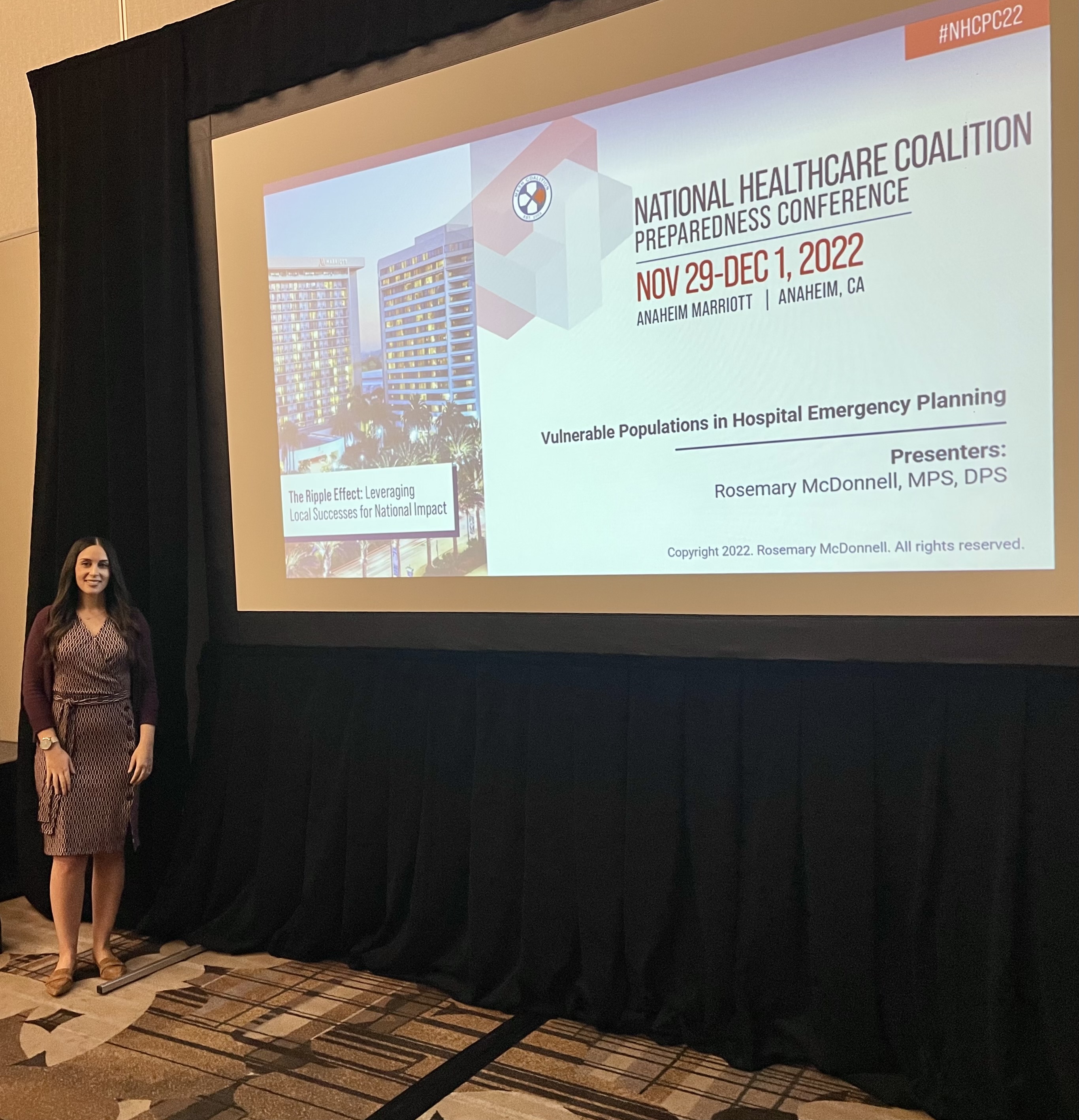- Home
- Announcements
- CCPS Adjunct Assistant Professor Discusses Hospital Emergency Planning at the National Healthcare Coalition Preparedness Conference

Rosemary McDonnell, an Adjunct Assistant Professor in The Collins College of Professional Studies and a Doctoral Candidate in the Homeland Security Doctorate of Professional Studies program, spoke at the 2022 National Healthcare Coalition Preparedness Conference on December 1, 2022 about sufficiently incorporating vulnerable populations into hospital emergency planning. The conference is organized by healthcare coalitions, and this year’s theme was the RIPPLE EFFECT: Leveraging Local Successes for National Impact. By learning from the local-level triumphs and challenges of America's healthcare coalitions, they can adapt these successes into long-term, dynamic solutions that will benefit fellow coalitions across the country.
This presentation examined the influence that a vulnerability characteristic may have on the extent of resources and support that those who possess one or more of these characteristics may receive, in terms of emergency preparedness and response in a New York City hospital setting. It examined how several factors, including the ownership status, location, and affiliation of a facility, may impact the level of emergency planning that vulnerable populations may receive. Best practices were examined for incorporating these at-risk populations into all-hazard emergency plans, as well as how facilities can increase resources, training, and personnel to support these plans.
This presentation sought to help organizations better understand their current capabilities for conducting specific emergency planning activities for vulnerable populations, as well as potentially identifying any deficiencies in addressing the emergency planning needs of these populations as defined by regulatory agencies. It also sought to enable the audience to lead the development or improvement of specific emergency plans focused on vulnerable populations for their organizations, as well as how to influence an increase in resources, training, and personnel to support these plans. The main takeaway from this presentation was the justification for the need for a solution to address the conditions, needs, and vulnerabilities of at-risk populations in all emergency planning settings, as well as the need that exists to integrate them into resiliency planning from the beginning stages.
